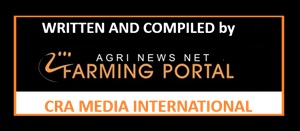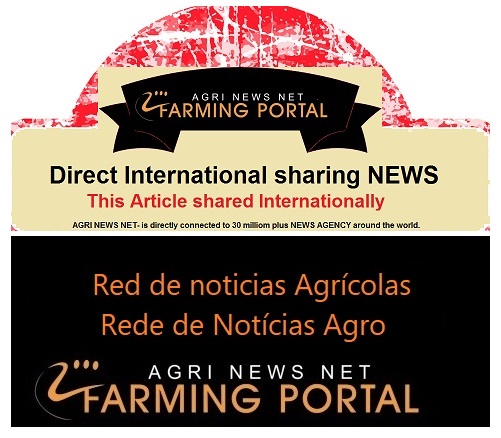World Farming Agriculture Commodity news - Weekly Updated - Exclusive and very popular - Delivering a Media service 365 days of the year
Here are the main highlights for some of Australia's key commodities and economic influences for this month. The full report provides an overview of the developments to watch in the upcoming weeks.
Wheat and barley: May wheat markets were supported by solid crop conditions in the EU and US, with yields expected to exceed historical averages and global ending stocks revised upward. Still, global prices are facing headwinds, with a supply shock needed to change course.
Canola: Global canola markets remain stable despite dry weather in Europe. They are supported by strong yield forecasts and a US biofuel policy shift that could boost Canadian exports. If confirmed, the US policy changes could benefit Australian exports as well.
Beef: High cattle numbers pushed saleyard cattle prices lower, with southern saleyards recording record-high volumes through May. Rainfall in some regions across southern Australia and an expectation of lower numbers in the coming months should help stabilise cattle prices.
Sheepmeat: Lamb and mutton prices in May jumped to some of the highest levels seen in recent years. Slaughter numbers remain high, but the price spike may be an indication that supplies are about to become more limited.
Wool: Recent Australian dollar strength alongside disappointing export data likely played a key role in pushing EMI prices lower over the past month.
Cotton: Australian cash prices struggled to find momentum in May as a well-supplied global market kept prices below the AUD 600/bale mark.
Farm inputs: Urea prices declined sharply month-on-month in May as news of China’s return to the export market, following 18 months of limited exports, helped to somewhat ease market concerns of tightening global supplies.
Dairy: New season milk prices have been set and are higher than last year at around AUD 9.00/kgMS. This represents a 6% lift on final milk prices for 2024/25. Firmer commodity markets and a weaker Australian dollar versus last year have supported rising farmgate milk prices.
Consumer foods: Monthly food inflation came in at 3.1% in April. Supply shortages from the avian influenza outbreak have driven egg prices 18% higher on an annualised basis.
Interest rate and FX: The RBA cut rates in May by 0.25 percentage points and signalled further cuts to come. The dovish signal from the central bank and a weaker outlook for growth and inflation has prompted RaboResearch to update its cash rate forecast. We now project a 2.85% cash rate by February 2026.
Oil and freight: Crude oil prices rose in May, but OPEC+ has announced another big round of production increases that could cap further rallies in prices. A 90-day tariff reduction between the US and China could pressure container rates higher in the short term.
After selling a 50% stake to meatpacker JBS in April, Brazilian egg producer Mantiqueira Brasil is starting greenfield projects in the US, Reuters reported, citing the company's president on Thursday during an industry event in Sao Paulo. Leandro Pinto said his son is in the U. overseeing the projects in Colorado. Outbreaks of avian flu, known as bird flu, which caused the death of millions of birds in the US and Europe, gave Brazilian eggs suppliers the chance to increase market share in global markets. Brazilian companies can both produce eggs locally and export, as well as set up production facilities in other continents, Pinto said. "We have plans to go to the world," Pinto said as he mentioned Mantiqueira's first greenfield projects in Colorado, where JBS already operated large meat plants.

The May reading was up 6% from a year earlier but over 20% below a March 2022 peak following Russia's full-scale invasion of Ukraine that started a devastating war between two of the world's leading grains producers. The FAO cereal price index fell 1.8% month-on-month, led by a sharp drop in global maize prices. Strong harvests and ample supplies in Argentina and Brazil, along with expectations of a record crop in the United States, weighed on prices.
Wheat prices edged lower due to improved crop conditions in the northern hemisphere. By contrast, rice prices rose 1.4%, supported by firm demand for fragrant varieties and currency movements.
Vegetable oil prices declined 3.7% from April, with declines across all major oils. Palm oil prices fell due to seasonal output increases in Southeast Asia. Soy oil prices dropped on higher South American supplies and weak demand for biofuel. Rapeseed oil eased on improved European Union supply prospects, while sunflower oil declined amid weak global demand.
The FAO sugar price index decreased by 2.6%, reflecting concerns over the global economic outlook, weaker demand from food and beverage industries, and expectations of a production recovery next season. Meat prices rose 1.3% from April. Beef, pork and sheep meat prices increased, with beef reaching a record high. Poultry prices declined, pressured by surplus supplies in Brazil following import restrictions linked to a bird flu outbreak. The FAO dairy price index rose 0.8%, supported by strong demand from Asia. Butter prices remained at historic highs, while cheese and whole milk powder prices also increased. In a separate report, the FAO forecast record global cereal production of 2.911 billion metric tons in 2025, up from 2.848 billion in its previous estimate and 2.1% above 2024. With production expected to surpass consumption, global cereal stocks are anticipated to grow by 1.0%, partially recovering from last year's contraction.
Context: At the Global Pulse Confederation’s Pulses 25 conference in Singapore, Murad Al-Katib, president of AGT Food and Ingredients, encouraged pulse companies to uphold sustainability messaging despite opposition from influential figures like U.S. President Donald Trump, who criticizes the green movement.
Trump’s anti-green rhetoric is making terms like “sustainability” and “ESG” taboo, but global consumers, banks, and pension funds continue to prioritize sustainability.
Pulses have an inherent advantage due to their nitrogen-fixing and soil health benefits, which should be celebrated and marketed aggressively.
The pulse industry is innovating, with products like Kraft Heinz’s Jell-O pudding using fababean protein and oatmeal with pea protein discs (18g protein/serving) gaining traction in markets like the U.S.
Agrees Trump is downplaying environmental issues, but climate change remains a critical threat to the agri-food sector.
Notes shifting investor sentiment, with sustainability losing appeal, which may explain Al-Katib’s call to rally the industry.
Suggests focusing on pulses’ nutritional benefits and stable pricing (compared to volatile animal proteins like beef, up 34% in Canada since January) rather than environmental benefits.
Highlights Canada’s declining beef industry (cow inventory at a 1989 low of 3.38 million, per capita consumption down 7.1% in 2023 and 2.1% in 2024) as an opportunity for pulses to address food inflation concerns.The pulse industry faces a challenge in balancing sustainability messaging with evolving investor and consumer priorities.Pulses’ nutritional and economic advantages position them well to meet demand for affordable, stable protein sources amid rising food inflation and declining animal protein consumption.
The European Union reimposed duties and quotas on Ukrainian agricultural products from Friday, and hopes to clinch a deal on new quotas that will be smaller than imports during the last three years after Russia's invasion, the EU's agriculture commissioner told Reuters.
The EU temporarily waived duties and quotas on agricultural products in June 2022 after Russia's full-scale invasion to help Ukraine compensate for the higher costs of its exports, after Russia threatened its traditional Black Sea shipping lanes.
Those tariff suspensions expired on Thursday. The EU and Ukraine reverted to the pre-war regime of trade quotas on Friday, while the two sides negotiate a new longer-term deal. Brussels is seeking to strike a balance between supporting Ukraine in its war with Russia, and heeding European farmers' concerns about cheaper Ukrainian imports.
"What will be negotiated will be something in between the quotas under the existing DCFTA and the autonomous trade measures, the volumes that have been exported there," EU agriculture commissioner Christophe Hansen said in an interview with Reuters on Thursday.
The DCFTA refers to Ukraine and the EU's pre-war trade deal. The EU's "autonomous trade measures" temporarily suspended quotas on Ukrainian imports from 2022.
Ukraine's farm minister Vitaliy Koval told Reuters this week that Kyiv was pushing for an agreement on higher quotas than it had before the war.
EU farmers have complained that large shipments of cheaper Ukrainian sugar imports under the wartime tariff exemptions have undercut local supplies. The EU triggered "emergency brakes" to re-impose quotas on products including sugar and eggs in the past year, in response to surging imports.
The EU's Ukrainian sugar imports soared to 400,000 tons in the 2022/23 season and over 500,000 tons in 2023/24, far exceeding the pre-war quota of 20,000 tons.
Hansen said the new quotas on sugar would be "significantly higher" than those under the pre-war arrangements.
"I think we can absorb a certain amount of those products," he said, while noting sensitivities among European farmers concerned about higher imports of sugar, poultry and eggs.
Negotiations on the new EU-Ukraine deal started on June 2. Hansen said it was feasible a deal could be reached by summer.
"It depends now on both sides, I think technically that could be feasible," he said.
Agricultural goods accounted for about 60% of Ukraine's total exports last year, with the EU buying around 60% of those goods, worth about $15 billion.
A senior Ukrainian lawmaker said last month the loss of tariff-free access to the EU market could cost the country 3.5 billion euros ($3.99 billion) in annual revenue.
"Our solidarity with Ukraine is as firm as ever, and therefore we are very committed to deliver this agreement as quickly as possible," Hansen said.
The pre-war quota regime, which applies as of Friday, also includes lighter rules on import licenses for some goods like poultry and eggs, where instead of requiring licenses, quotas will be allocated on a first-come, first-served basis.




















